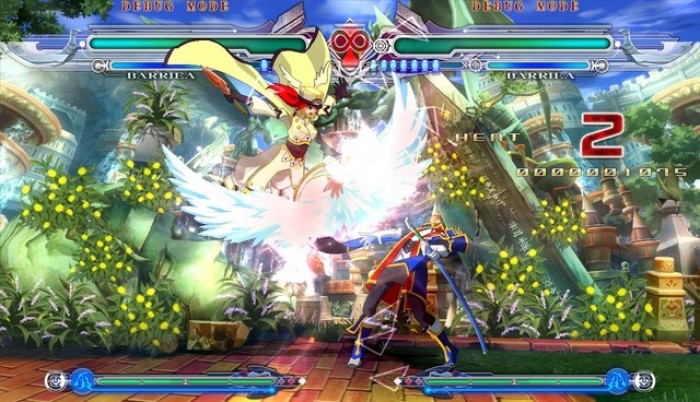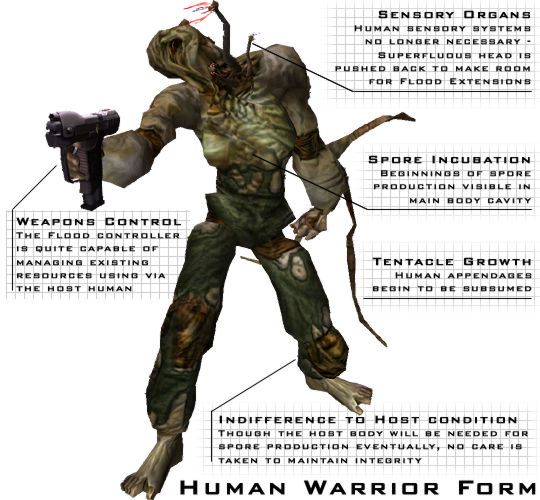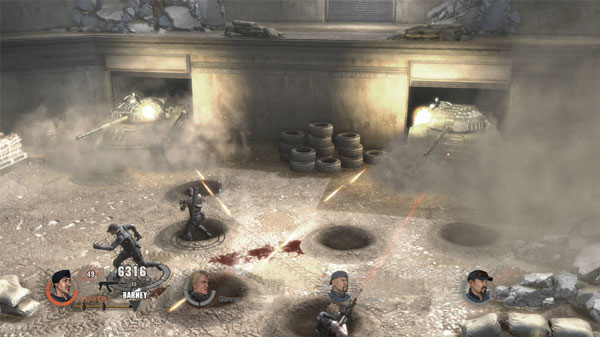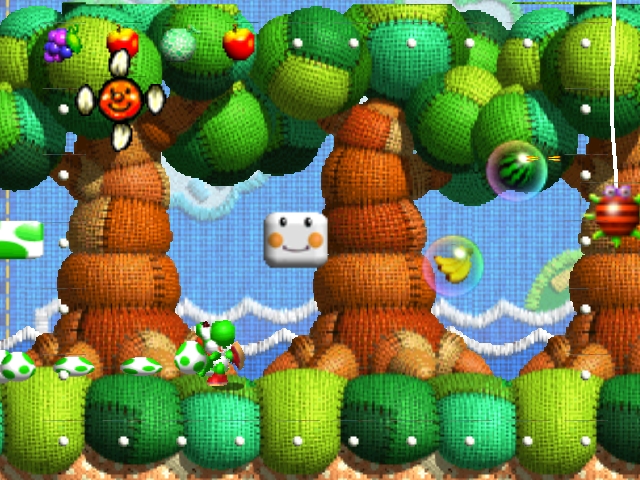Game Design and Production has never shied away from doing
class participation though always to various extremes. Today was the most
involving and interesting class activity in a while. Usually class activities
are with small groups of around 5 or so, but this time it involved splitting
the entire class into 2 very large groups.
The objective was for each group to make a game within
around 25 minutes and had the following guidelines…
- You have 1 ball
- Objective: Get the ball into a basket
- Use whatever you want in the room to help with the rules of the game
To set some perspective on the
environment we were in, it was a large room, with about 8 rows of long desks
extending across the room. Here is a picture to show the room we were in and
how we could use.
Our group demonstrated our game
first while the 2nd group did so afterwards. I will put it out there
that they were interesting for the time given to make them but overall they
were pretty bad games.
1st Game – Chaos Bounce
Rule overview
The group I was a part of. For our game we made it a team
based sport with 5 players on each team. The goal still is to get the ball in
with one team starting with the ball in possession.
- Teams are to position their players around the field strategically before the match begins. They were allowed to stay on top of the desks.
- An important thing to note is that players cannot move from their initial spot. They are allowed to take a step out but leave a foot behind as well as move their hands to block but they cannot take a real step out. The only time they can move is when they have the ball in possession, and are allowed 3 steps.
- This makes it important to pass the ball around as you won’t be able to score if someone is blocking your way. An important thing to note about passing is that when passing you must bounce the ball on a surface first to your teammate. Fairly to do so was not actually given a consequence yet but you just weren’t supposed to.
- If somehow a player misses passing the ball, since no one can move from their spot, it will automatically go to the closest player.
- One final rule is that players cannot position themselves too close to the basket so that they cannot easily dunk the ball in.
- An added rule near the end was for every player to take a chair and choose a position to place it on the tables around so that it could prove to be an obstacle and block other players.
Players must always bounce the ball when passing
Problems with the
game
Breaking down the game, it became pretty obvious it was
similar to handball and basket ball. The handball rule of only moving a certain
amount when holding the ball applied with our rule #1. The basketball aspect
came from rule 3, bouncing the ball. However it was obvious it was a very
static and rather boring version of those games due to the fact that no one
else can really move except for the player holding the ball. It makes the game
a lot slower as repositioning will only happen when another player manages to
get the ball and they really cant move too far.
Another problem lies with rule 4, which sends it to the
closest player. It should have been automatically given to the other team
because the passing team made a bad throw and should be punished. Otherwise
they could simply throw it really far, reaching their teammate on the edge and
being out of reach of anyone else so they can automatically get the ball.
The whole positioning of the game is interesting but
honestly really slow and boring. A player could literally stand there and never
get the chance to do anything in the game. Nor can they make “good plays” by
getting into position at a good moment. This is like a turn based bored game
with some interaction between players, not what a game with a ball should
really be like.
Chairs as an obstacle were there but didn't really matter all that much
What could be
improved
In a game like this, you really need to have some control
over your movement, either that or the rules needed to be changed because it
would have just become handball. Games with static movement in a physical sport
are not generally as fun as those that have some movement. The idea of
positioning is neat, but it needed to have just a bit more movement because if
you never got the ball, you were pretty much stuck.
There were also simple rule changes that could have made the
game better but weren’t put in time to be applied to the game, such as the ball
going out of the reach of players.
Conclusion
For a game made in 25 minutes though, it isn’t bad but it
wasn’t particularly fun either. I volunteered for testing the game though only
with 3 on 3. It was honestly not interesting because I never once got the
chance to get the ball due my position. I already went over the problems with
positioning but honestly it just wasn’t too fun. It looked like it had potential due to the
positioning of chairs and people, however people on the edge of the area just
couldn’t do as much as people closer to the basket.
2nd Game –
Human Foosball
Rules Overview
The game made by the 2nd group, I honestly didn’t
hear all the rules but the basic gist of it was human foosball. For some reason
both of our groups decided that we should have minimal movement in this game
and be stuck in the same position for most, if not the entire game. With their
game, you could not move at all, no matter what, you stayed in the same
position.
The basket was placed in the middle of the field, where it
was surrounded by members of the two teams in foosball like positions. They
litered all the rows of the area, (not allowed on the tables) with around 10 or
more players on each team. They essentially slapped the ball, trying to get it
into the basket. It was simply mindless hitting into the center which looked
kind of fun and intense at times but overall was as static as our game.
Problems with the
Game
People in certain positions hardly ever got to see the ball
or get a chance to hit it, which in all honesty doesn’t look like too much fun.
Since they were forced to stay still in that position, it made players in the
center the most likely to hit the ball and have the most fun, while players on
the outer edges got it far less frequently. There was a lack of balance in who
got to hit the ball the most due to these positions so the fun factor was not
equal.
Another problem was that players would often hit the ball
out of boundaries which slowed down the game since they had to go pick it up.
The Legendary Game Design Ball
What could be
improved?
It was honestly an interesting idea but if the game allowed
for a bit more movement then it would have been better. Something I would have
done to add to the fun was to allow some limited player movement. Players
should be able to move around a bit in their row, a limited distance but not
running into other players (if they happen to be in the same row). This would
allow players to be more mobile and have a shot at being able to hit the ball
to where they need to.
The basket was also located too close to players, if they
were farther back they it would have allowed for more shots on the net that
weren’t blocked by players. It would have given an opportunity for more
scoring. The demo by the other group had no one scoring in the timeframe they
were given.
Conclusion
This game was even less mobile than our game which I don’t
find to be that good of an idea. It definitely looked chaotic like our game but
I noticed a good portion of people who rarely were able to hit the ball. The
idea was interesting but seemed to lack in fun factor for those on the edges.
The goal behind this activity
Both games used a mix of level design and Game Design. We
created the rules but then we fit those rules and mechanics into the field we
were to use, which is the goal of level design. I can tell that both groups
thought more so about the game design aspect then the level design aspect.
Though the rows of desks were incorporated, the only other level design that
came about from the activity was for my group, (Chaos Bounce) which
incorporated chairs into it to make more dynamic levels.
There has been a lot of emphasis on level design these past
lectures so I believe it would have been more beneficial if we had put a bit
more interesting design into the use of the room. Group 1 (Chaos Bounce)
however had better use then group 2 (Human Foosball) so my group wins!



































